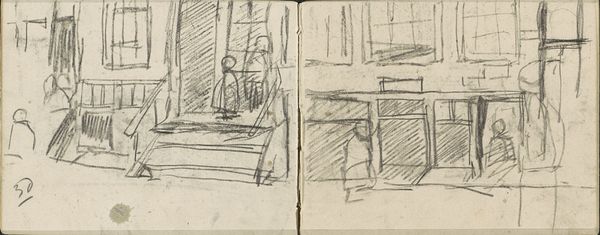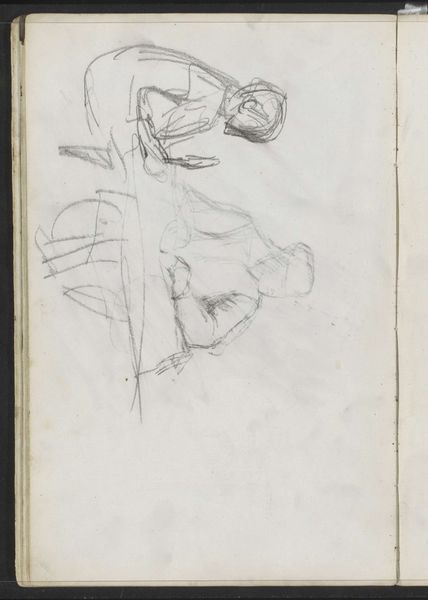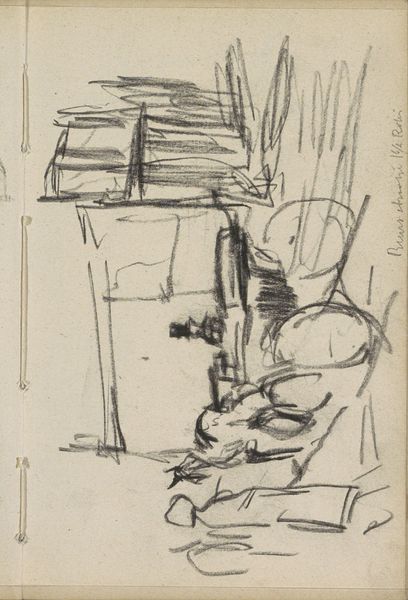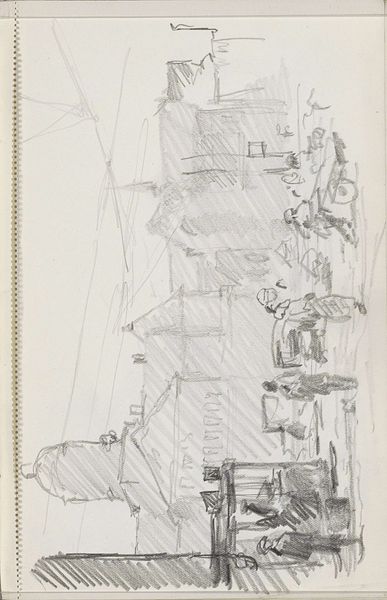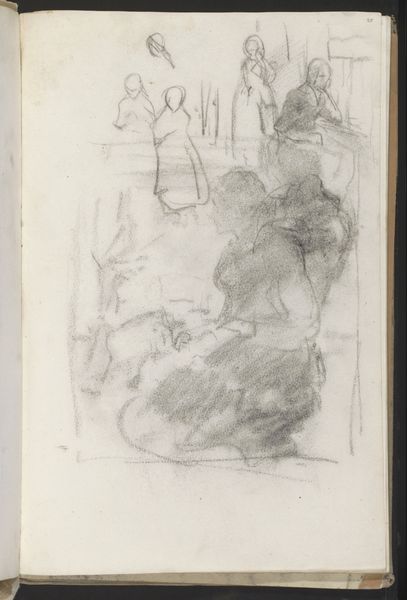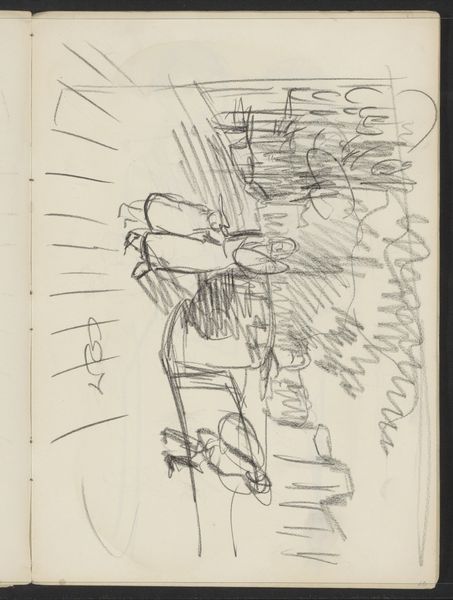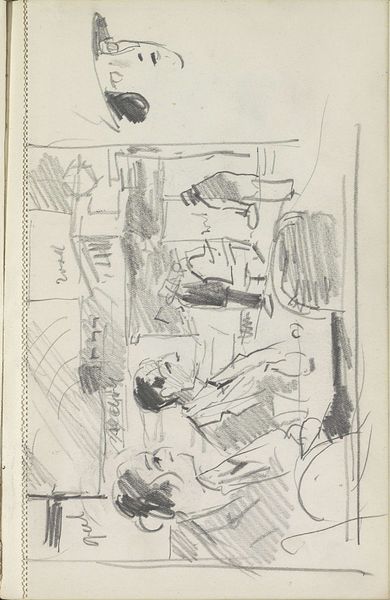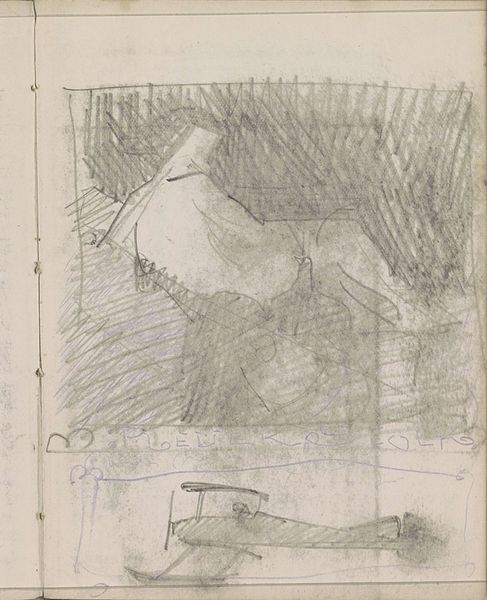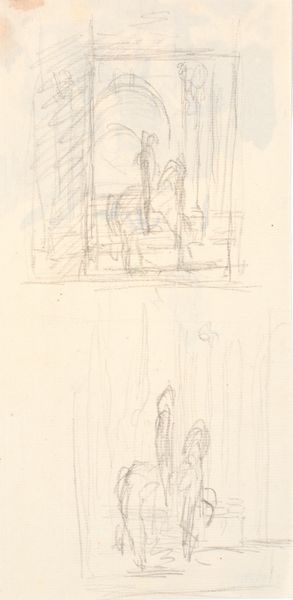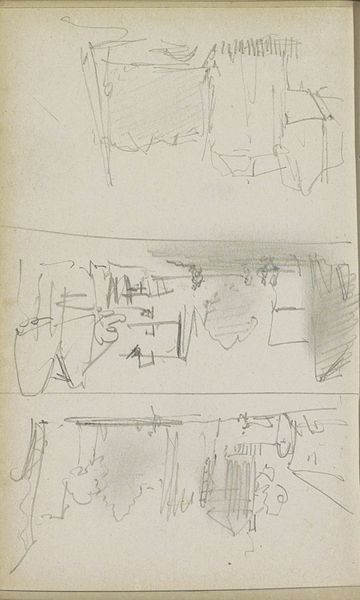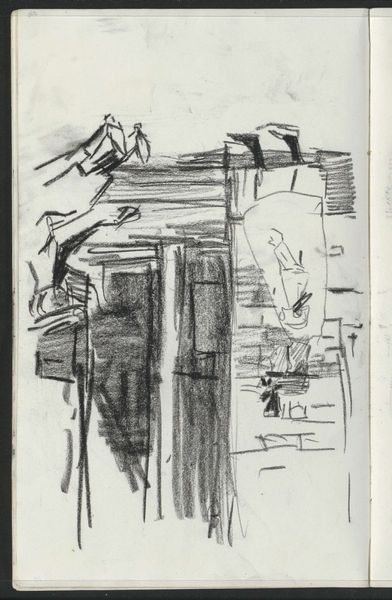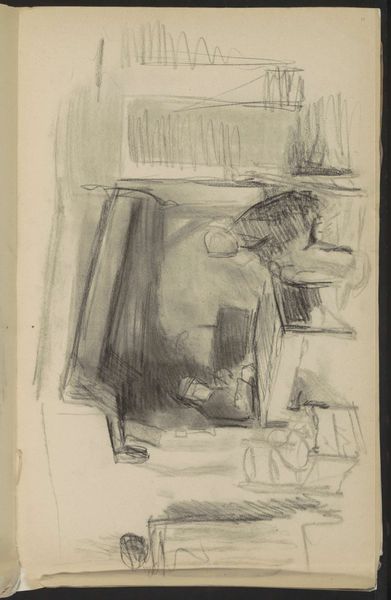
Interieur met twee figuren aan een tafel bij een open raam 1854 - 1914
0:00
0:00
albertneuhuys
Rijksmuseum
drawing, pencil
#
portrait
#
drawing
#
toned paper
#
quirky sketch
#
impressionism
#
sketch book
#
personal sketchbook
#
sketchwork
#
ink drawing experimentation
#
detailed observational sketch
#
pencil
#
sketchbook drawing
#
genre-painting
#
storyboard and sketchbook work
#
sketchbook art
Copyright: Rijks Museum: Open Domain
Editor: Here we have Albert Neuhuys’s "Interieur met twee figuren aan een tafel bij een open raam," created sometime between 1854 and 1914. It’s a pencil drawing on toned paper from a sketchbook, and there's almost a raw intimacy to the scene, catching what seems to be a very casual, domestic setting. What jumps out at you when you look at this work? Curator: I’m drawn to the inherent value placed, or not placed, on labor by showcasing this seemingly quotidian scene. Neuhuys renders the figures without idealization. It raises questions about who had the time and resources for art, versus those represented in the art. This begs the question: Was Neuhuys highlighting labor, or merely including it as part of the human condition? Editor: That's a really interesting point – I hadn't considered the socio-economic aspect so explicitly. It makes me wonder about his choice of materials too, just pencil and toned paper in a sketchbook. Was that simply what he had at hand, or did that selection speak to a certain artistic philosophy, perhaps embracing the readily available? Curator: Exactly! Think about the accessibility of these materials. Was Neuhuys making a statement about art's potential to exist outside the confines of traditional high art, emphasizing the artistry of the working class in an art world so dedicated to those who possessed the most financial comfort? How much of artistic movements were based around what materials and training were readily accessible versus intention? Editor: It changes how I see the artwork entirely! So, is the fact that it’s a sketch from a book a nod to more widespread engagement? It’s making me question who has the liberty to engage with art on any level. Curator: It absolutely does, and I think that interrogation is exactly where the power of understanding process and materials truly lies! Hopefully this inspires people to rethink historical class divides within the art world itself.
Comments
No comments
Be the first to comment and join the conversation on the ultimate creative platform.
